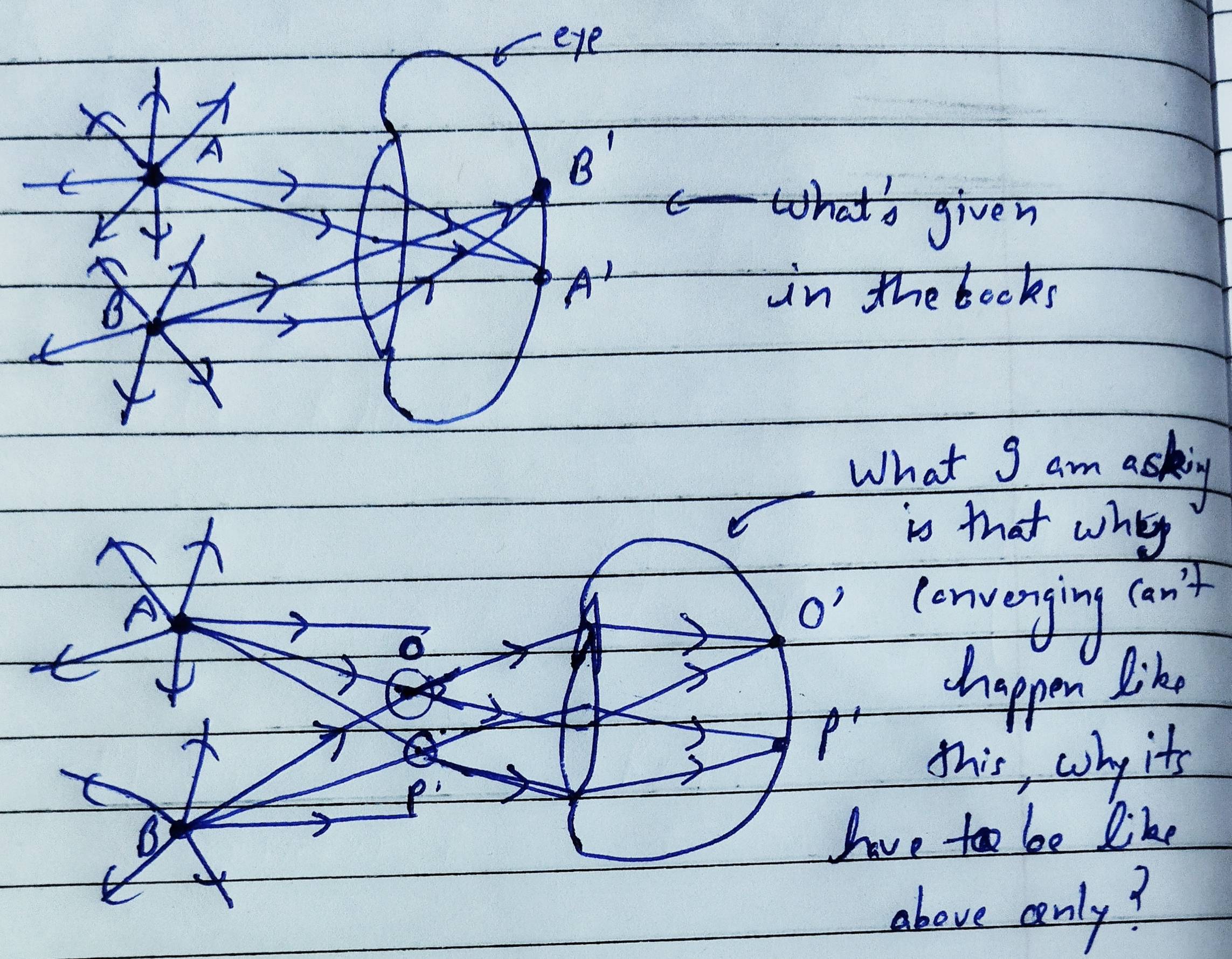I am a high school student and I am very confused in one thing in optics (ray optics) which I think is the most basic thing but didn't find any answer on internet, before I ask let me present one thing because only if this is true my question will be understood.
My understanding :
I think when we switch on a light bulb in a dark room,
The light rays from it gets bounced off from walls and they crosses each other at several points in space of the room and these points are behaving like point sources and light rays are not coming directly from source but from these points in space that's why a room gets illuminated, I mean not only the walls but the space of the room also gets brighten up.
And that's only because of these points in space where light rays coming from many objects crosses each other.
If my understanding is correct then let's take a look at my query:
As we can see, in above image there are two point sources (for practical purposes I am considering it as point sources because all the light rays from them are diverging) you can see that :
There are several points in space where light rays from them are crossing each other in space, it means they are getting mixed (by mixed I mean if the light rays from "different" objects focus on one single point on retina when rays from them will enter eye rather light rays from each object separately), but still we can distinguish both sources separately and at the same time we can also see the illuminated space around them.How is it even possible? How we can see the brighten space as well as distinguish both sources?
I have taken only two sources but in actual life, there are many objects in room which reflects off light and all of their rays are getting mixed in space before entering eyes still our eyes (or brain) is able to distinguish which rays are coming from which object.How?
For me, everything should look like a uniform mess of illumination like this:
I appreciate the efforts made by people{for me the most important part is discussion ,not the solution} but for those who still doesn't get a clear view of what I am asking(as it seems some people are still not very clear in understanding what I am asking) I am uploading one more picture , I am just asking when we see any object why the ray diagram can't look like the second one in this image [![this image shows rough ray diagrams when we see any object]
















